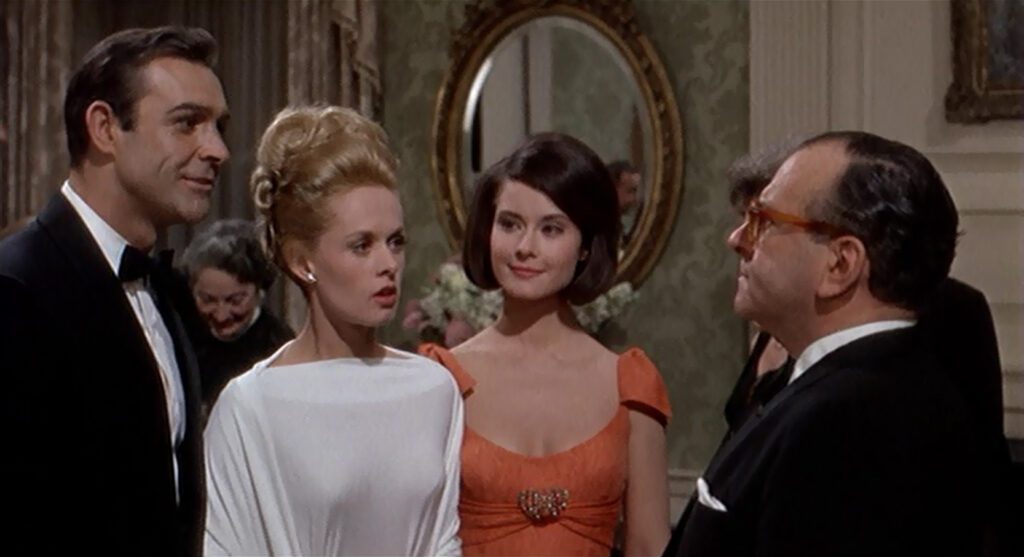
Marnie
1964, directed by Alfred Hitchcock
In the middle of their honeymoon Mark Rutland tells Marnie about a curious natural phenomenon in Kenya: a coral-colored flower with green-tipped blossoms which resembles a hyacinth but turns out not to be a flower at all, but a colony of hundreds of flatid bugs camouflaging themselves from hungry predators. This comes out of the blue over dinner in the cruise ship’s dining hall, apropos of nothing, but in a strange way it defines the movie because the characters are like those bugs. Their pleasant and attractive public appearance disguises personalities that are warped and unpleasant when seen up close.
Each of the five major characters is prey to a destructive obsession. Marnie is obsessed with stealing; Mark wants to dominate wild creatures and force their trust; Lil would break the law to get Mark; Mrs. Edgar wants to cover up her sordid past at all costs; and Strutt, feeling rejected and victimized, is obsessed with revenge. The movie only has time to analyze Marnie, but looking at the roots of her personality should give us insight into why human beings often wind up with misshapen personalities that cause so much harm.
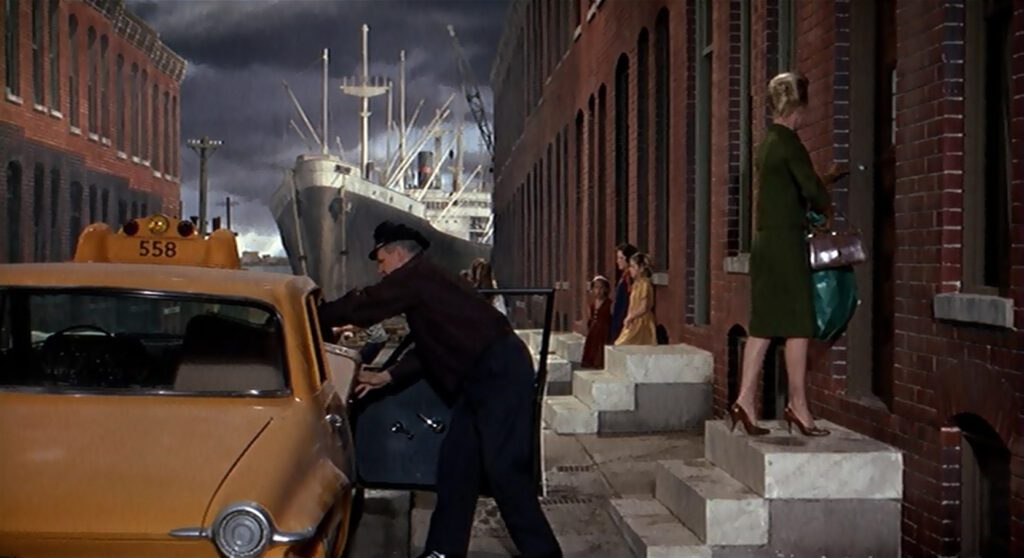
As usual, Hitchcock looks to Sigmund Freud for answers. He evidently appreciated Freud’s core teaching that emotions are not just chaotic ripples in our minds, but a logical result of formative experiences, often from early childhood. Hitchcock was an enthusiastic popularizer of Freud, whose theories are ingrained throughout the director’s films, sometimes overtly and sometimes hidden.
To a surprising degree Marnie is a retrospective on Hitchcock’s career. The director was fond of remaking his own films. He made The Man Who Knew Too Much twice; North by Northwest is a reversal of Saboteur; and Psycho is a reformulation of Vertigo for everyone who misunderstood the original. Marnie is a nostalgic return to the successful formula of The 39 Steps and The Lady Vanishes, a suspense-romance about a woman stuck with a man she can’t stand – but it’s also a remake of Spellbound.
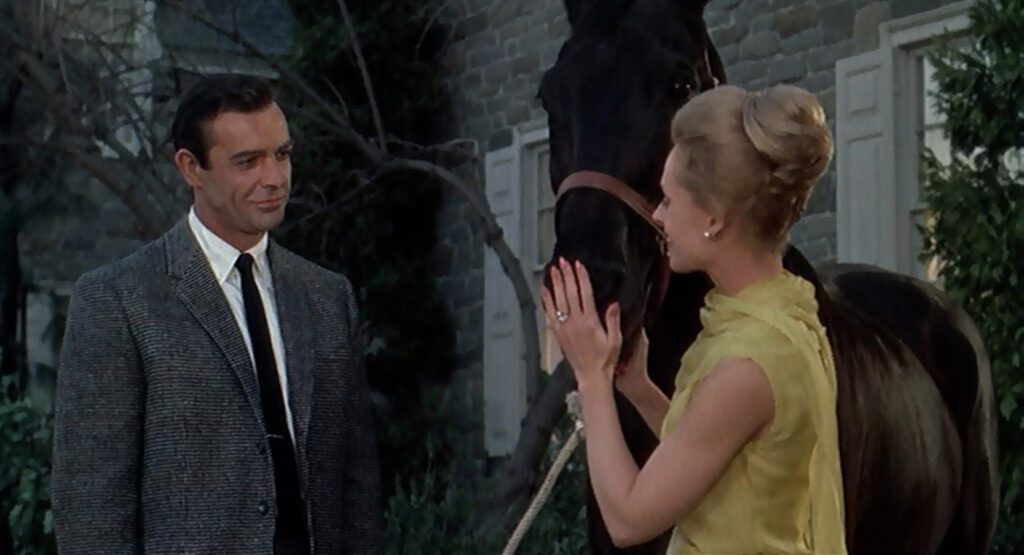
By 1964 Hitchcock had come a long way from Spellbound, which had introduced Freudian psychology to the public nineteen years earlier. Hitchcock had already delved into Freud’s dark side in Strangers on a Train, Vertigo, and Psycho, and it was no longer necessary to sugarcoat Freud or to reduce his ideas to the repressed unconscious. Marnie returns to Spellbound‘s premise of repressed childhood trauma, only now with sexuality thoroughly mixed in. The parallels are clear: in each film an abstract visual cue (lines on a white surface or the color red) triggers flashes of anxiety; each showcases a basic Freudian technique (dream analysis in Spellbound, free association in Marnie); and each climaxes with a shocking childhood memory leaping into consciousness to reveal the source of illness.
Marnie is about crime – Marnie is a thief and Mark is a rapist – but unlike most Hollywood crime movies, moral judgments are beside the point here. If it’s possible to understand people, then, at least in Hitchcock’s and Freud’s thinking, it should be possible to fix them. We only see Marnie once in the act of stealing, and it’s filmed dispassionately so we can see her actions for what they are. The screen is split roughly in half: a cleaning woman mops the floor on the left while Marnie robs the safe on the right. Both women are “cleaning up”, one literally and one in the colloquial sense (as in Strutt’s opening line: “Robbed! Cleaned out!”). This visual joke aside, the parallel framing puts Marnie’s crime in perspective, comparing two versions of work: good honest ordinary labor on one side, compulsive dishonesty on the other.
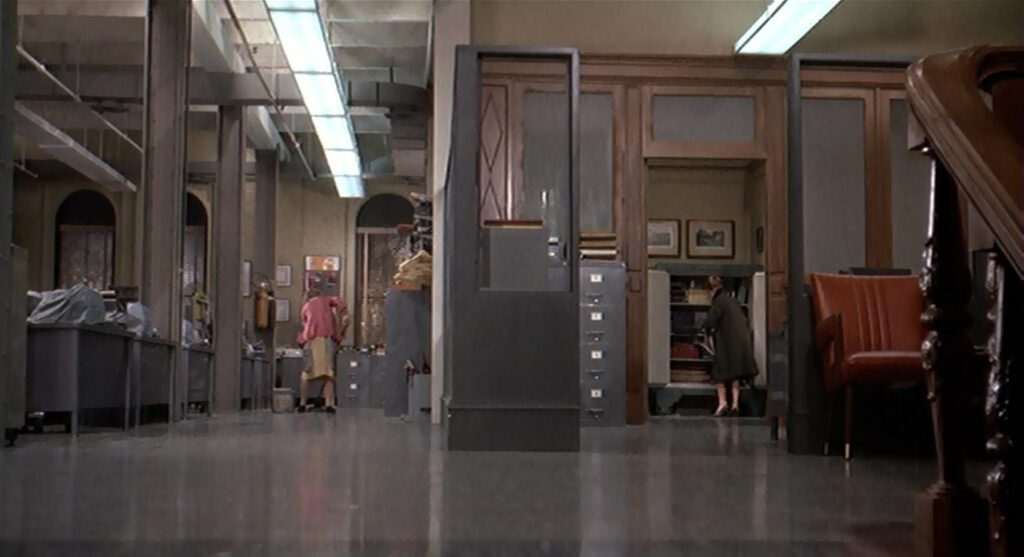
One thing is evident about Marnie’s thievery: she gets no pleasure from it. She’s not the stereotypical kleptomaniac who steals for the adrenaline rush, nor is she driven by a vain hunger for wealth. She sends much of the stolen money to her mother, and if she wanted to be rich she might show more eagerness to marry Mark Rutland. Stealing is an unpleasant compulsion for her. When she returns to the safe right before the last scene, she fights the urge to take the cash, reaching for it again and again until Mark comes.
The ending at Marnie’s childhood home in Baltimore seems to explain everything. Having researched Marnie’s past, Mark prompts her to recall the repressed memory of a stormy night when a client of her mother’s had sexually assaulted her, and after her mother’s leg was crushed trying to protect her, the little girl killed the man with an iron poker. Marnie’s fear of thunderstorms and the color red, and her revulsion at being handled by men, are understandable avoidance reactions. We’re also told that her habit of stealing is a way of reaching for the love she feels she isn’t getting anymore from her mother – but this last point is not altogether satisfying. It’s not obvious or intuitive that feeling unloved would produce such a symptom. Hitchcock was probably not satisfied with the answer either, because the movie gives Marnie a more compelling reason for stealing… but let us put it in context first.
Marnie shows almost as many parallels to Vertigo as it does to Spellbound – a Bernard Herrmann score, washes of color to depict memories, a dizzying shot at the climax that combines a forward zoom with backward tracking, and most provocatively the kiss in the stables. The strongest similarity though is in the leadup to the final scene. In both movies a man forces a woman on a long drive with the idea of taking her back into the past. Scottie Ferguson isn’t quite aware that it’s his own childhood past he’s thinking of, but Mark Rutland knows he’s bringing Marnie on a psychological journey to revisit her formative experiences.
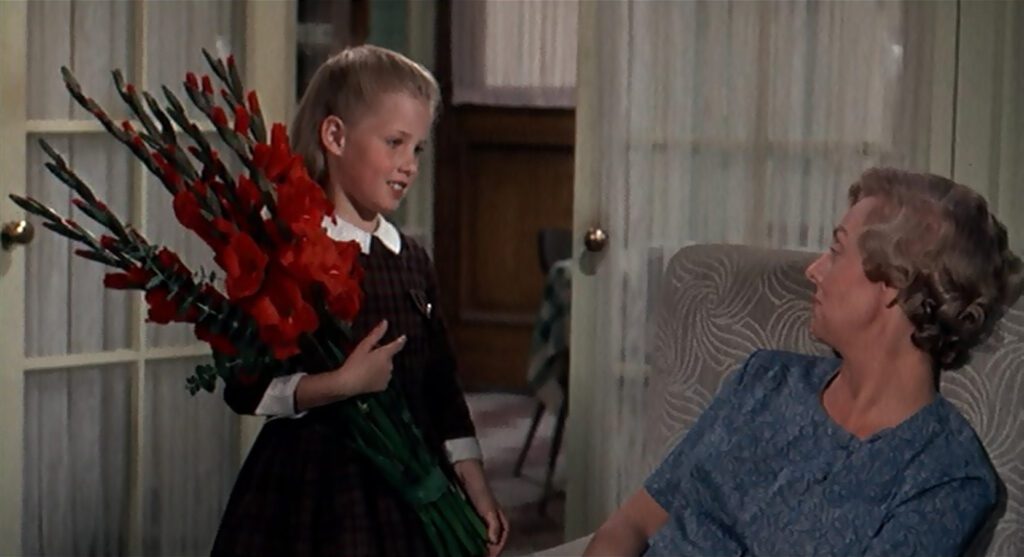
Most of the scene that ensues with Mrs. Edgar is set squarely enough in the present tense, and when the film switches to Marnie’s flashback we know it, but there’s an uncanny signal of psychological regression outside Mrs. Edgar’s rowhouse. The soundstage street with the harbor diorama is so glaringly artificial that it’s like a childhood memory. The same setting appears near the beginning of Marnie, and on both occasions a group of children skips rope outside, pacing themselves with a nursery rhyme:
Mother, mother, I am ill
Send for the doctor over the hill
Call for the doctor
Call for the nurse
Call for the lady with the alligator purse
“Mumps” said the doctor
“Measles” said the nurse
“Nothing” said the lady with the alligator purse.
It’s easy enough to take this rhyme as nothing more than a strangely appropriate chorus. Marnie’s purse, a metonymy for her thefts, had already dominated the opening shot on the train station platform, and the rowhouse is clearly connected to Marnie’s childhood. What’s less obvious is how this rhyme tells a story that accounts for Marnie’s compulsive stealing better than the excuse that she craves her mother’s love.
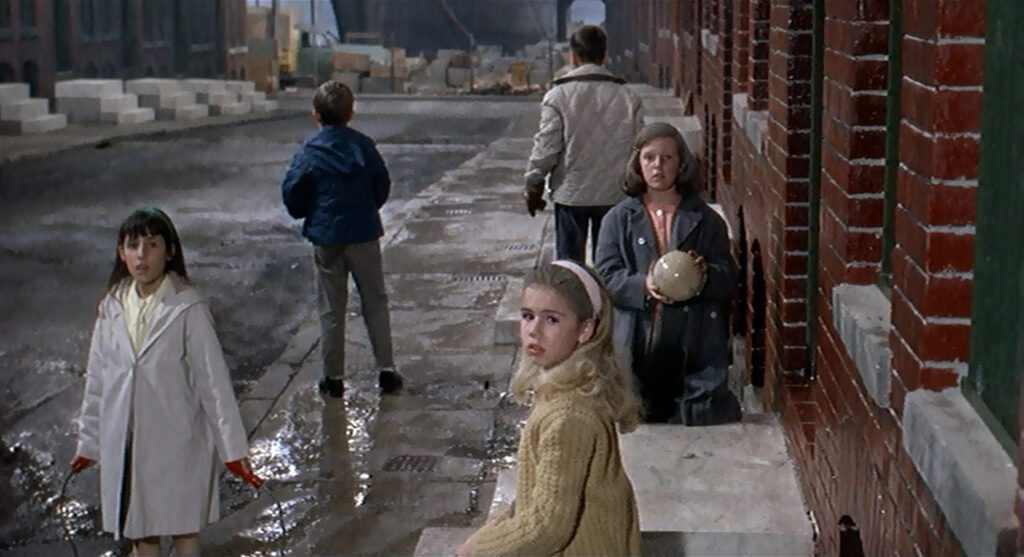
Like any nursery rhyme, Marnie probably would have heard those lines in her childhood. It’s also likely that the neighborhood children, having heard that something wasn’t right in the Edgar house, would have made a special point of chanting this rhyme around Marnie, who would have felt shamed overhearing it. She had no way to erase the events that provoked the rumors, and no one would have been available to ease her troubled mind, but she desperately wanted to feel there was nothing wrong with her. The rhyme gave her a convenient way to do that. A nurse or a doctor were not what she needed – so she thought – but she liked this lady with the alligator purse who said there was actually nothing wrong with her. She may well have fantasized about growing up to be that lady with the alligator purse; but in her childlike imagination, having no notion of such a thing as alligator leather, she imagined a purse with the jaws of an alligator, gobbling up money. The act of filling up her purse would have given her an unaccountable feeling of safety, a feeling she learned when her greatest worry was what her playmates thought of her.
What’s true of Marnie can also be true of anyone else, certainly of the characters around her. She knows she has a problem, as Mark too admits his own, but they both hide their irregularities from society, as we see at the Rutlands’ house party, or at the racetrack where Mark plays the tough protector. By casting actors as glamorous as Tippi Hedren and as heroic as Sean Connery, Marnie puts extra emphasis on the fronts people put up to conceal their unattractive inner lives. Like those bugs in Kenya posing as a colorful flower, grown humans are often unprotected children hiding beneath their presentable facades.
CONNECTIONS:
The 39 Steps – Suspense story in which a woman is stuck with a man she initially dislikes
The Lady Vanishes – Suspense story in which a woman is stuck with a man she initially dislikes
Mildred Pierce – Cleaning women representing honest labor in contrast to a character who cheats life
Spellbound – Psychoanalytic story culminating in recovery of traumatic memories; symptoms associated with a single color (white in Spellbound, red in Marnie); showcase for Freudian technique
5 Fingers – Character’s identity motivated by a particular remembered image
Vertigo – Kiss in stables; Herrmann score; color for memories; zoom/tracking; journey into past at end
Whity – Humans universally twisted beneath their social masks